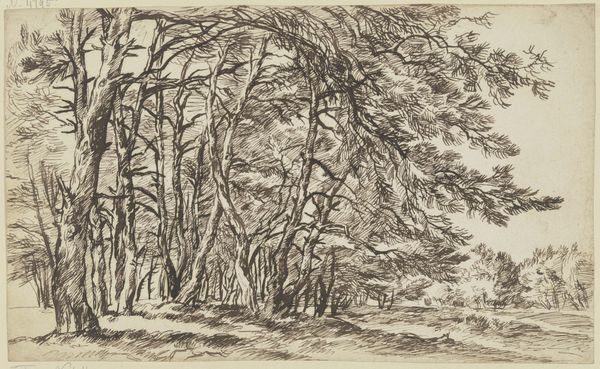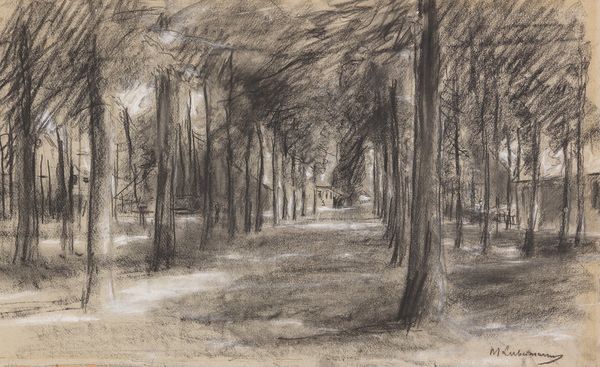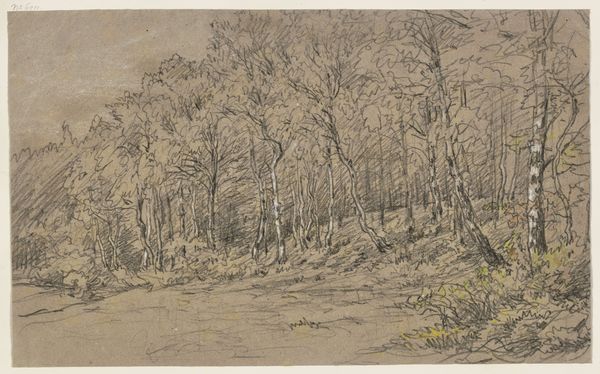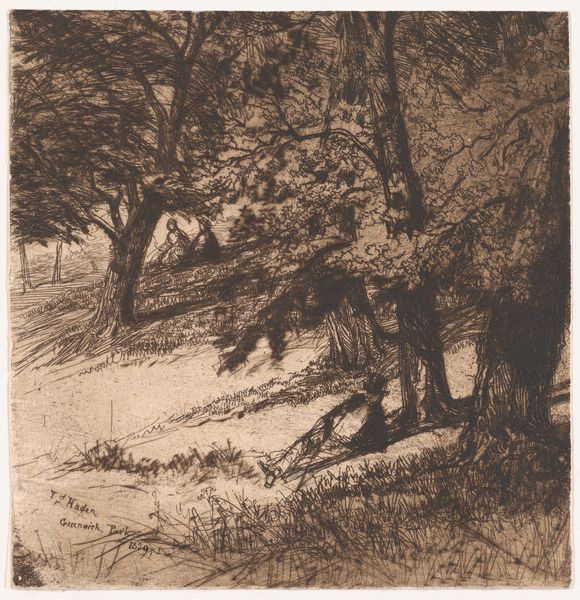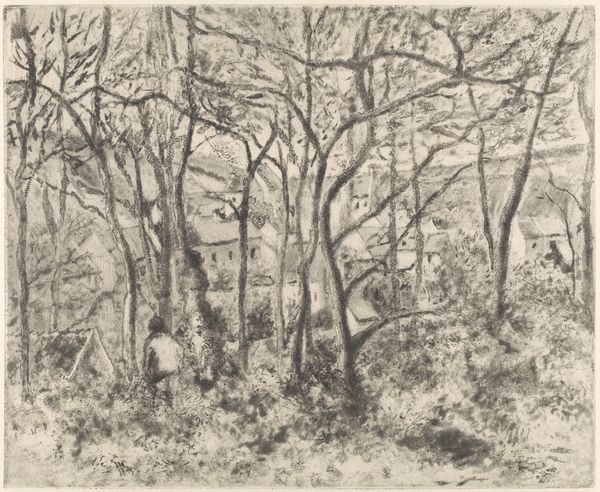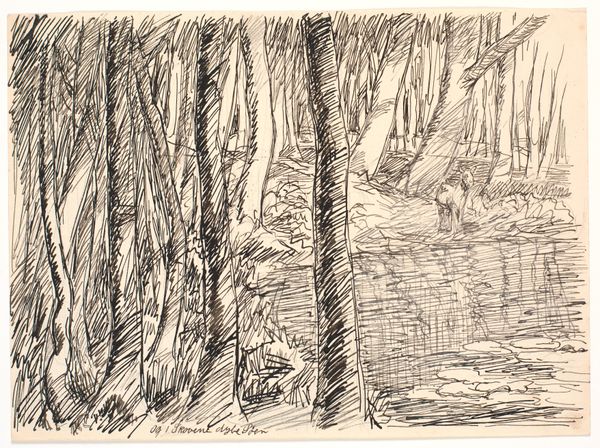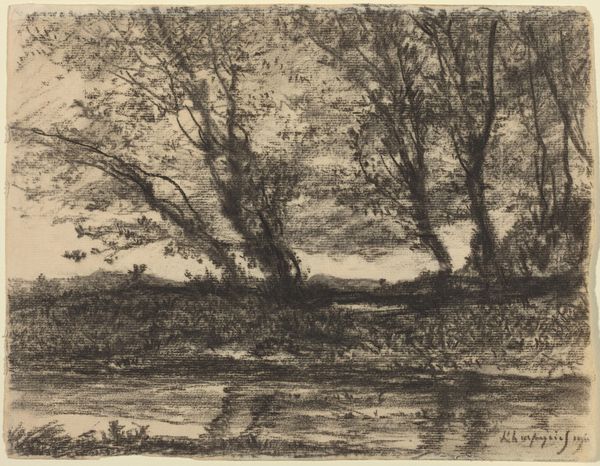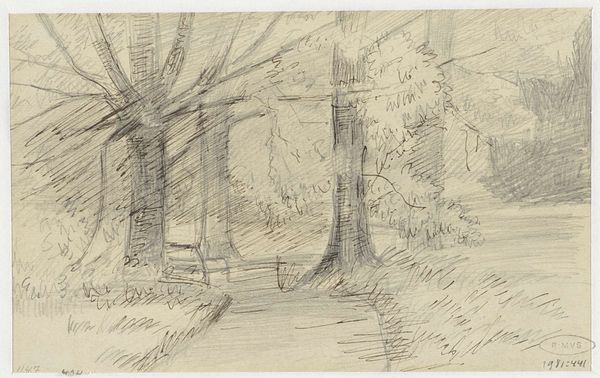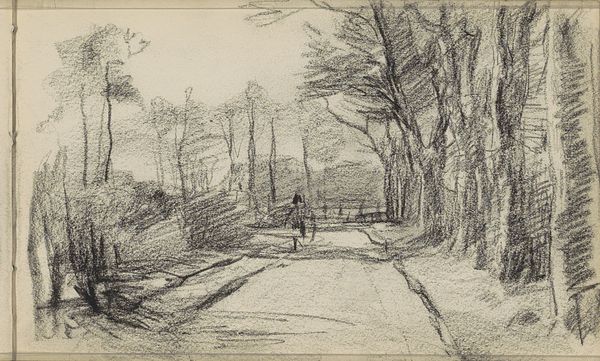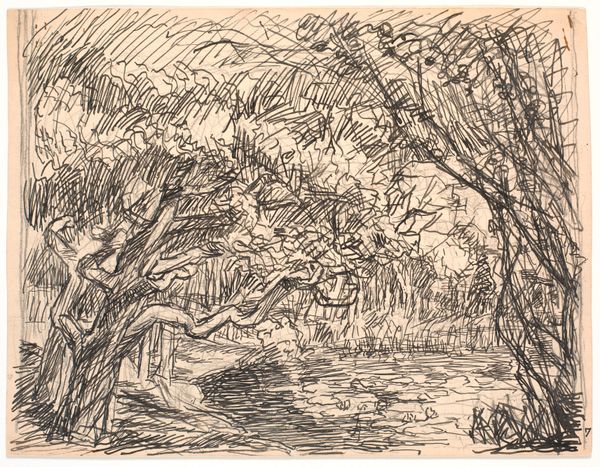
drawing, plein-air, graphite, charcoal
#
drawing
#
impressionism
#
plein-air
#
landscape
#
graphite
#
charcoal
#
northern-renaissance
#
realism
Copyright: Public domain
Curator: This is "The Undergrowth in Quimper," a charcoal and graphite drawing created by Jules Breton in 1890. It feels almost clandestine, doesn't it? Editor: Absolutely. My first impression is of quiet observation, like stumbling upon a hidden glade. There's a meditative quality evoked by the almost monochromatic palette and dense layering. Curator: That layering contributes to the sense of depth and intimacy. Breton's choice of charcoal and graphite allows for a rich tonal range, which in turn creates a very tactile impression of the forest floor, that feels distinctly real. I am also immediately drawn to the figure sitting in the left of the frame sketching. This piece seems like an intimate study of place, as if it is almost a visual diary page. Editor: Indeed. And the act of drawing within the drawing, points toward the practice of plein-air which becomes very prominent toward the late 19th century, when artists take to directly observing their natural surroundings rather than painting from imagination in studios. Quimper in Brittany also holds a symbolic significance, as a popular place for artists. Curator: That's a really good point. I find the composition carefully constructed; The way he’s created light as it falls into the scene, almost reminiscent of those Northern Renaissance woodland scenes, a kind of reverence. Do you pick up on that too? Editor: I do, but I think the impressionistic strokes make it feel fresh and of its time. It avoids that stiff formality and instead aims for the feeling of nature. Breton has this ability to bring out the emotions carried by the woods – they’re not simply a background but something psychologically engaging. Curator: Exactly. And that evokes something very enduring about our connection to natural spaces. What resonates perhaps from my iconographic perspective, is how Breton isn't just documenting a location, but he is showing how that specific setting might imprint in one's memory. It's about an atmosphere as much as it is about literal representation. Editor: Well said. Looking at "The Undergrowth in Quimper" encourages us to contemplate the intersection of history, technique and our intimate emotional connections to the landscape around us. It makes the viewer remember their own outdoor sketching session, almost… Curator: … or their solitary meditative time in nature, a really lovely synthesis of art and the experience of self in place. Thank you!
Comments
No comments
Be the first to comment and join the conversation on the ultimate creative platform.
